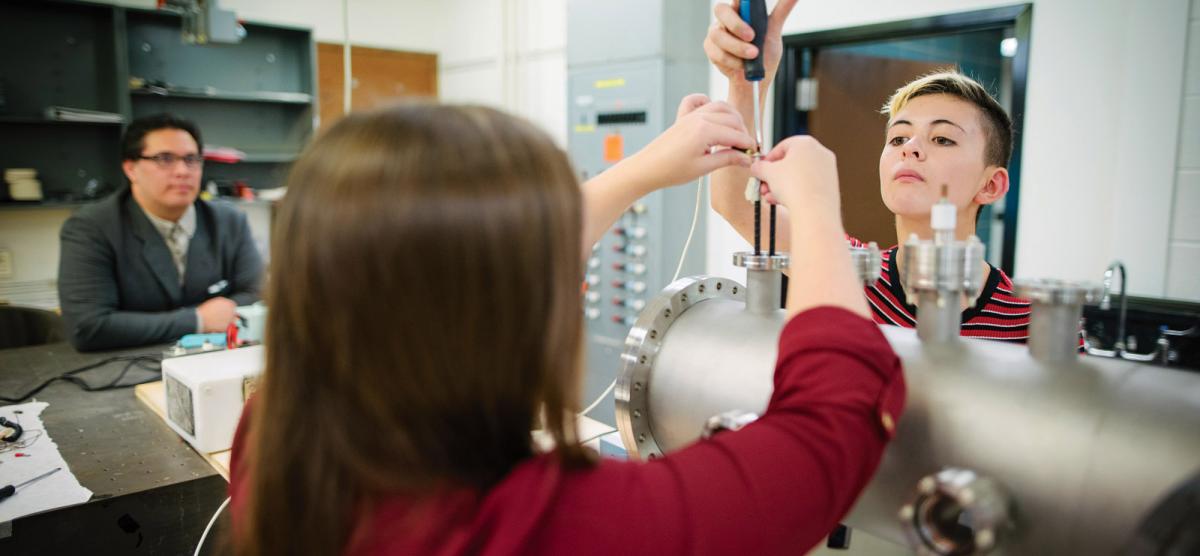
In Search of Positive Energy
Physics professor and students are working toward the "holy grail": fusion.
The recipe for nuclear fusion sounds simple: take two hydrogen isotopes, smash them together until they fuse, and cook up a massive supply of energy.
The problem is that, to date, scientists haven’t succeeded in scaling up fusion reactions. “Researchers have done fusion,” says David Schaffner, an assistant professor of physics. “We’re at a stage where we can make fusion reactions, but we can’t do it consistently in a way where we get more energy out than we put in.”
As part of a team working in Swarthmore Professor Mike Brown’s lab, Schaffner and several Bryn Mawr College students are working on a Department of Energy-funded project to find lower-cost solutions to the high-cost enterprise of nuclear fusion.
Their research is focused on creating a self-contained plasma bubble, called a spheromak, that contains hydrogen isotopes that would be pushed through a chamber using a fast pulse of current through a copper ring—like a watermelon seed being squished between your fingers.
For the student researchers, the project finds them working on the holy grail of energy research. Junior Hayley Johnson’s research on the effect of various metal chamber plates on the pulse coil will provide data to guide coil designs, and her classmate Codie Fiedler-Kawaguchi ’18 has been working on measuring the plasma’s magnetic field.
Nuclear fusion is so difficult because, to achieve it, very small particles must first collide. By using plasma, the researchers hope to confine the hydrogen particles and allow for multiple possible collisions.
As Schaffner explains, “If fission is shooting an oil tanker with a sniper bullet, fusion is two snipers facing each other a mile apart and having them fire and hoping the rounds hit each other.”
A Lab of Their Own
Bryn Mawr's new plasma facility, slated to open in about a year, will center on turbulence in plasma.
Fusion Tech now?
“Like lighting a candle with a flame-thrower. You can do it but you’re not gaining anything,” says Schaffner.
In a Flash
Since spheromaks move at 50 kilometers per second, Schaffner’s experiments are over in a flash.
Published on: 03/18/2017
